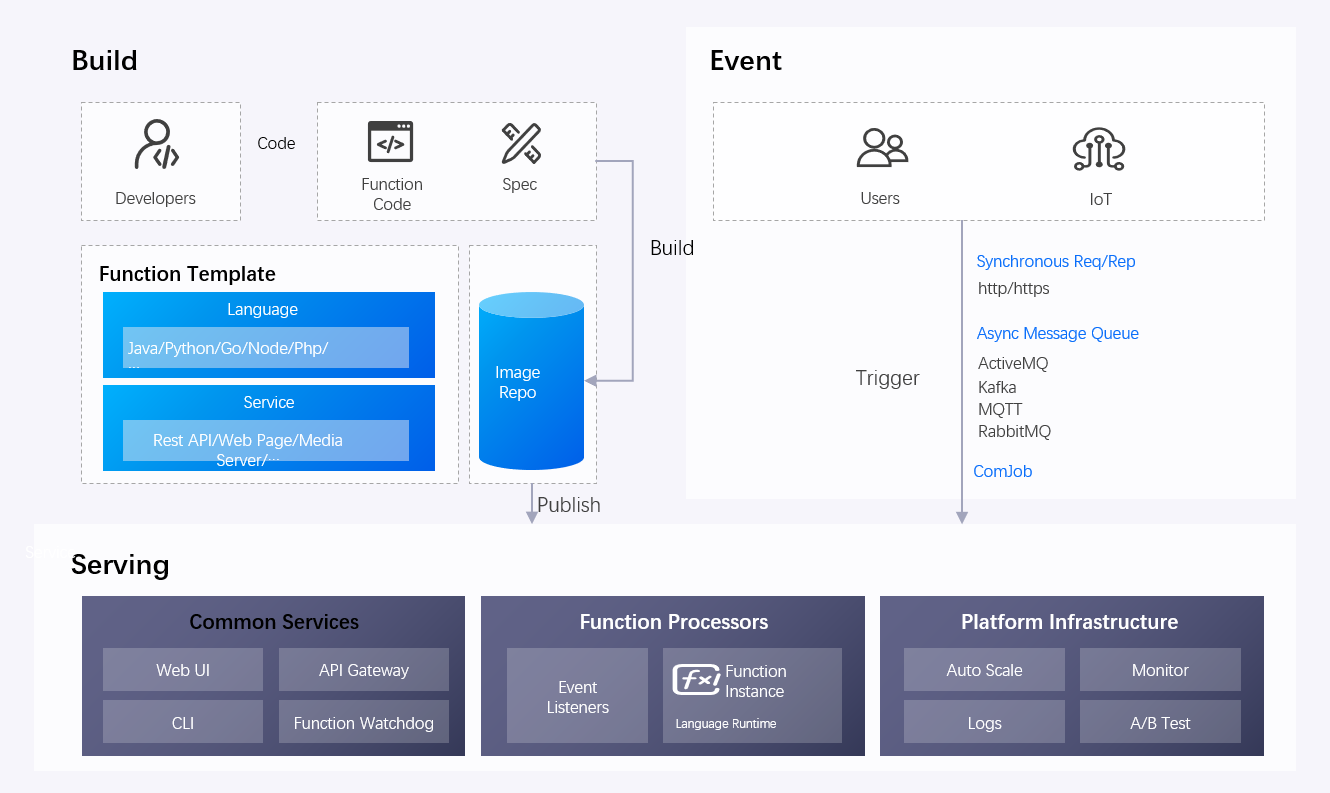Serverless Service Overview¶
Serverless is a Function as a Service (FaaS) product that provides a Serverless and FaaS computing platform. It runs on event triggers, so when combined with a trigger event source, cloud functions can be triggered to run by events generated by the trigger source.
The architecture of the serverless service is shown in the following diagram.

Concepts¶
Serverless
Serverless refers to the ability for developers to use resources without knowledge of the underlying servers, hence the term serverless. Serverless can also be identified in a broader sense, as cloud services that can be used directly without configuration and knowledge of the underlying servers can also be called serverless to some extent. In the Function Computing Service, we are targeting the computing scenario in the serverless scenario, and the Serverless Function Computing Service provides FaaS capabilities in serverless mode.
Function as a Service (FaaS)
Function as a Service (FaaS) provides the ability to run stateless, ephemeral, event-triggered code directly on the cloud.
Applicable scenarios¶
Enterprise Container Platform Serverless Service for application back-end services and large-scale data processing and computation, including.
IoT/IoT sensor input messages
As IoT devices increase and mostly use messaging protocols such as MQTT, Serverless can respond quickly to sudden influxes of messages and scale resiliently.
Batch processing jobs or scheduled tasks
Suitable for jobs that can perform robust parallel computing, IO or network access in an asynchronous manner, can consume the required resources efficiently and flexibly, and do not incur resource costs for the remainder of the time they are not in use.
HTTP REST API and Web applications
Single REST calls (e.g. GET, POST, UPDATE and DELETE in microservices) that can be scaled independently and billed separately.
Continuous Integration Pipeline
Serverless eliminates the need for traditional CI requiring pre-configured hosts, with build jobs triggered by new code commits or PR merges, invoked to run builds and test cases, executed only as long as needed, and without incurring costs when not in use. Costs are reduced and bottlenecks can be reduced by automatically scaling to meet demand.